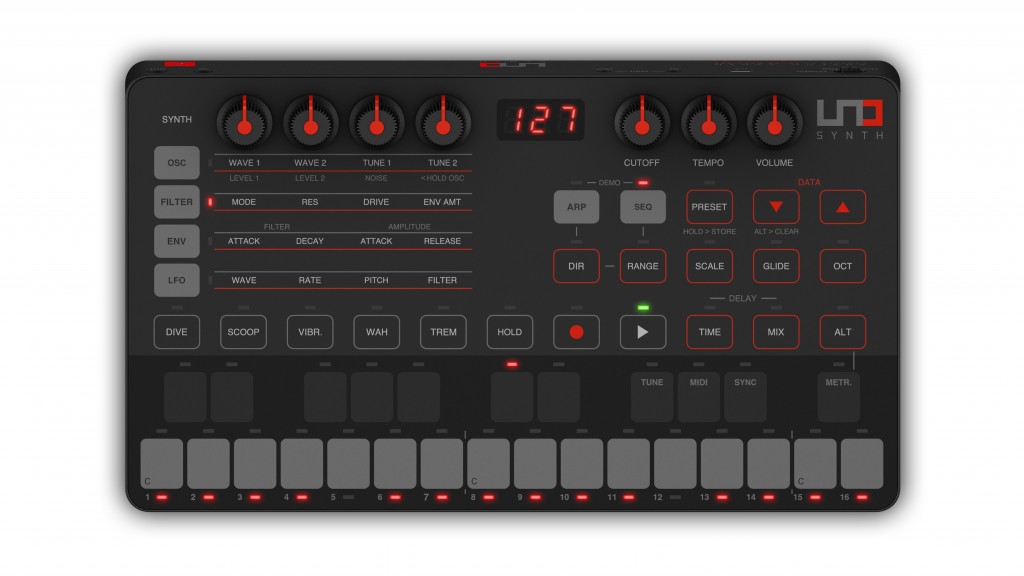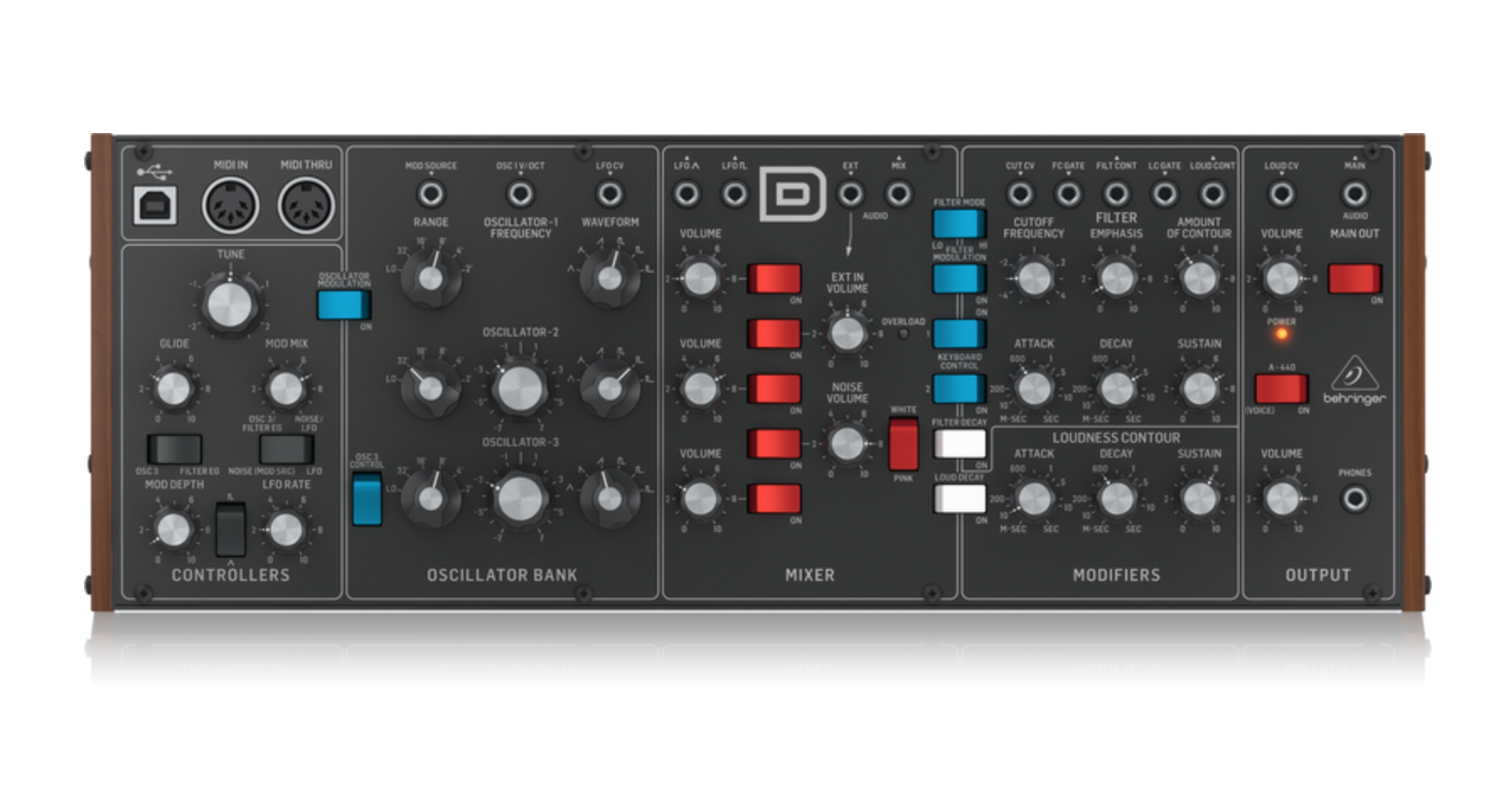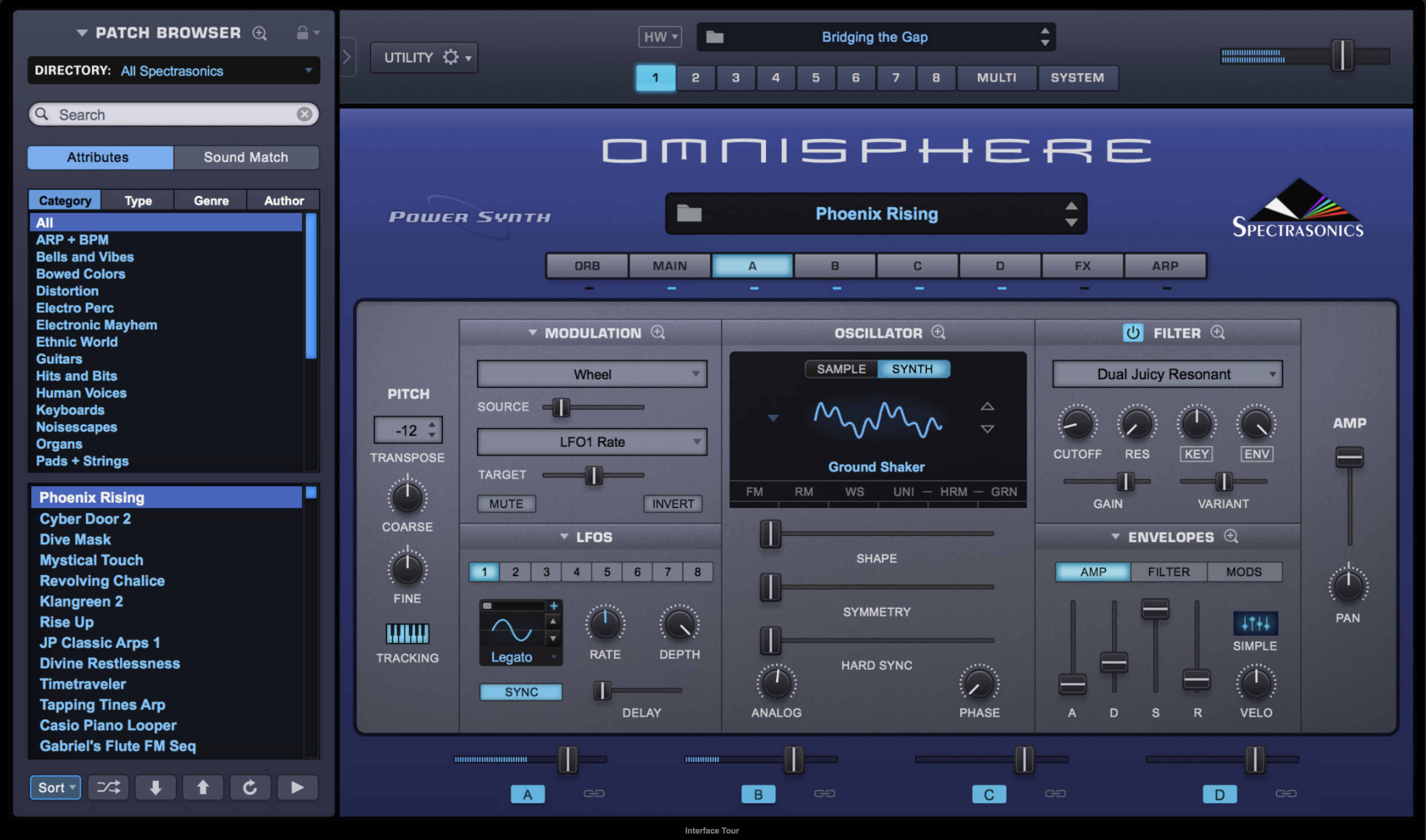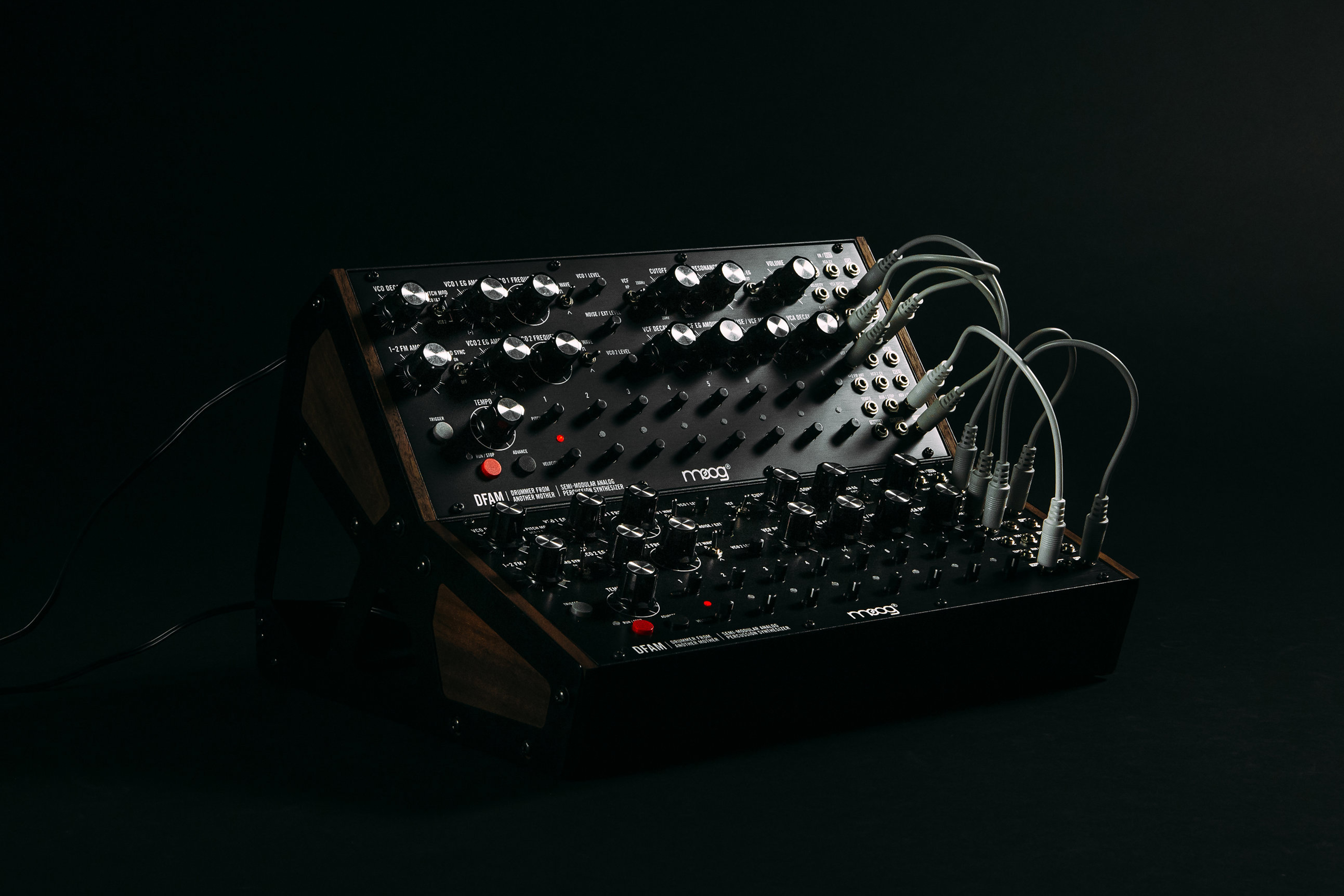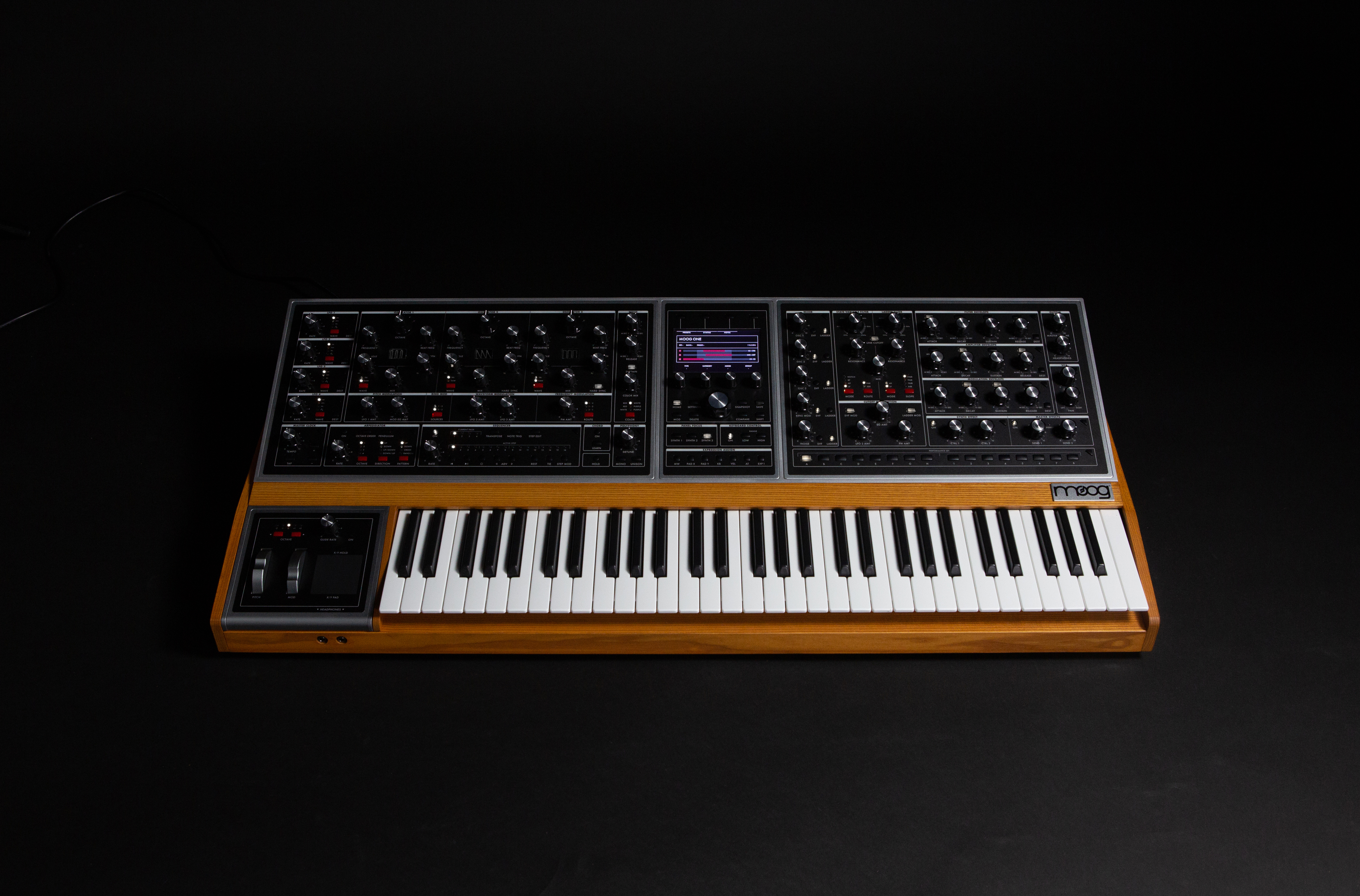The Best New Synths of 2018
2018 was a great year for synthesizers.
After attending the recent Synth Expo in LA, I realized that, though the world of software synthesizers is booming, there’s still a huge fan base for hardware synthesizers.
In addition to standalone units, the ongoing resurgence of the Eurorack seems to be getting bigger and bigger every year. Today, we are going to take a look back on some of the most amazing new synthesizers that blew us away this past year.
IK Multimedia UNO
Best Affordable Portable Synth
The UNO is an interesting little analog monster. With its sleek black interface, small form factor and the ease of using it on the go, it is a great synth for beginners and those looking for some portable analog vibe for their productions.
Admittedly, it can be a bit tricky to program the UNO by hand due to the menu diving required to access certain functions on such a compact unit, but the included free iOS and Mac editor allows you to tweak patches and save and recall presets quickly with much more ease. I find that the UNO is especially remarkable for distorted, grungy tones, and the filter can be absolutely disgusting in the best way possible. If you want a cleaner Juno or Jupiter style vibe, this is definitely not the synth for you, but if grit and grime is your vibe, you will be most pleased.
Admittedly, more control over ADSR on the synth hardware itself would make it more usable for me. Another weakness is that I found it noisier than other analog synths in the same price range.
If it’s connected to your computer for power, there is a significant chance that you’ll experience some digital interference that I’ve found to be almost a 30 dB louder noise floor than when it’s running off batteries.
IK has informed me that you need to use a USB isolator or run the synth off batteries to avoid this, but it seems like an inconvenience. (I had never actually heard of a USB isolator before they recommended it to me as a solution.)
On a more positive note, the arpeggiator and sequencer make it really fun to program and come up with great musical progressions. It’s not a “perfect” synth, but would you expect it to be at this price ($199.99) and size? It is however, a great affordable pocket synth that is sure to entertain synthesists of all skill levels, and impressive enough of a value to easily make into my top 5 of the year.
Behringer Model D
Best Affordable Mono-Synth
I never thought I’d say it, but I really like this Behringer product. The Model D is meant to rip off the DNA of a classic Moog mono-synth of the same name at a way more affordable price.
At just $329, the Behringer Model D offers a timeless 3-oscillator bank, a filter with ADS and amp envelope controls, as well as a mixer that provides the option to overload the circuit and introduce either white or pink noise.
Most of the layout is taken from the synth this one is based on, though Behringer cleverly included a range of more modern connections like MIDI I/O, a USB type B connection, along with CV control of a lot of key parameters.
Sonically, the Behringer Model D is fat and sounds surprisingly old school. At this price, I had all expectations for this synth to feel cheaply made or sound thin, but it has completely blown me away. Any fans of Kraftwerk, Michael Stein, Kyle Dixon, or really any fans of analog synthesis in general will want to try this. It’s very easy to integrate into your eurorack synth setups and I’m considering introducing one into my Moog DFam/Mother 32 rig.
Additionally, Behringer put out a fantastic software update this year that allows you to poly chain multiple Model D synths together so you can get massive chords or huge basslines. Here’s a video from the Behringer website showcasing the sounds of 3 Model Ds chained together:

In this price range, the only competition the Behringer Model D has is the Roland SE-02, which is also an incredibly portable mono-synth with a similar architecture. The SE-02 has more of a modern take on the original Moog, but it’s missing out on the 1⁄4″ outputs that the Model D has which may make it more useful for live performances.
The Behringer Model D is about $150 cheaper, and at this price point, it’s hard to pick between both as they are incredible little synthesizers. Behringer has announced they’re going to keep expanding on their analog synthesizer output over the next couple of years and I’m excited to see what comes from the company after having fallen in love with the Model D.
Spectrasonics Omnisphere 2.5
Best Synth Upgrade
While I wanted to focus primarily on hardware synthesizers for this roundup, I couldn’t help but include the new Omnisphere 2.5 update that came out this summer, as it has some truly amazing new features integrating hardware.
The new Hardware Synth Integration allows you to plug a hardware synth into a computer and have all the knobs pre-mapped to specific functions.
For instance, I have a Roland SE-02 that I can connect to my computer via a USB cable. With Omnisphere open and the SE-02 selected under its new drop-down menu for supported synths, moving the cutoff knob on the synth will move the filter knob in Omnisphere. If you’re using a stock preset or a default patch and move the filter, with that specific synth plugged in, a SE-02 style filter will be automatically thrown onto that preset.
This means if you have a Dave Smith Keyboard, you can use it with Omnisphere, and moving the filter and effect knobs will automatically add Dave Smith-esque character to Omnisphere. Suddenly, the software becomes way faster to program and perform with.
Adding to the fun, you can have multiple supported hardware synths, allowing you to completely change the character of Omnisphere by just moving knobs on your favorite synths!
While not every synth is supported by Hardware Synth Integration, the ones that are add a whole new level of sophistication and sound design possibilities to the already incredible Omnisphere software.
In the past, I’ve found that I mainly rely on presets in Omnisphere but now with hardware integration, I actually feel connected to the plugin and feel more confident crafting my own sounds within the software.
In some funny way, this new update actually promotes hardware synthesizers and instead of trying to replace them, creating a symbiotic relationship where you can keep some of the unique characteristics of your synths in Omnisphere and use these tweaked patches on the road or save them as presets for later recall.
Moog DFam
Best Percussion Synthesizer
The Moog DFam is a unique one on this list as it’s an analog percussion synthesizer. With its two-oscillator design and eurorack compatibility, I was immediately drawn to the DFam as a way of adding two additional oscillators to a Moog Mother 32 so I could get a “classic MiniMoog” style 3-oscillator synth setup.
While that alone is pretty remarkable, I’ve discovered that there’s so much more the DFam can do. The 8-step sequencer can be used to create some pretty nice basic percussion patterns, and it can easily be synced to your DAW via CV tempo control, or even with a simple 16th note pulse sent from your DAW. I’ve found that the Dfam is incredibly inspiring for coming up with percussion sequences, and it has become an essential tool for me when I’m coming up with eerie ’80s arpeggios, as you can program the pitch and velocity of each step on the sequencer.
Admittedly, there is a bit of a learning curve with the DFam, though the included cardboard preset cards and YouTube tutorials on Moog’s channel make it much easier to understand. It can introduce some unpredictability into your setup and is a welcome tool for those searching for some unique inspirational patterns from a synth.
Moog One
Most Powerful Synth
I was a little hesitant to put two Moogs on this list, but the new Moog One might be one of the most powerful synths I’ve ever encountered, and it certainly deserved a mention.
It’s been more than three decades since Moog has released their last polyphonic synthesizer, and the tri-timbral analog Moog One is quite the comeback. Each voice relies on three high end analog VCOs, two independent analog filters (a Variable State filter and the classic Moog Ladder Filter). It can be run in series or parallel, an analog noise generator, an analog mixer, four LFOs, and three envelope generators. The 3 timbres you program can be split or layered, each with its own sequencer, arpeggiator, and onboard effects library. And to command it all is a 61-note Fatar keyboard with full velocity and aftertouch response.
Available in 8 or 16 voice configurations, the Moog One is a very expensive synth but seems justified based on the numerous features and the handcrafted touch straight from Moog’s Asheville, North Carolina factory. On top of all the synth sound-shaping capabilities, there are also effects including chorus, delay, phase, bit reduction, vocoding, and an impressive suite of Eventide reverbs such as Blackhole, Shimmer, Plate, Room, and Hall. There’s quite possibly too much to cover with this synth.
In the history of pop music, some pieces like the Juno, Jupiter, CS-80, MS-20 and even Native Instruments Massive and Serum have gone down in history as coveted synths that shaped the sound of generations. While the Moog One may be prohibitively expensive for many (especially in a world full of great-sounding affordable plug-in synths) it certainly has the potential to become one of those treasured synths that will be loved for years to come.
Well there you have it, thanks for checking out our top 5 synths of 2018. Are there any we missed that you’ve been using? Let us know about your favorites in the comments below!
Please note: When you buy products through links on this page, we may earn an affiliate commission.







